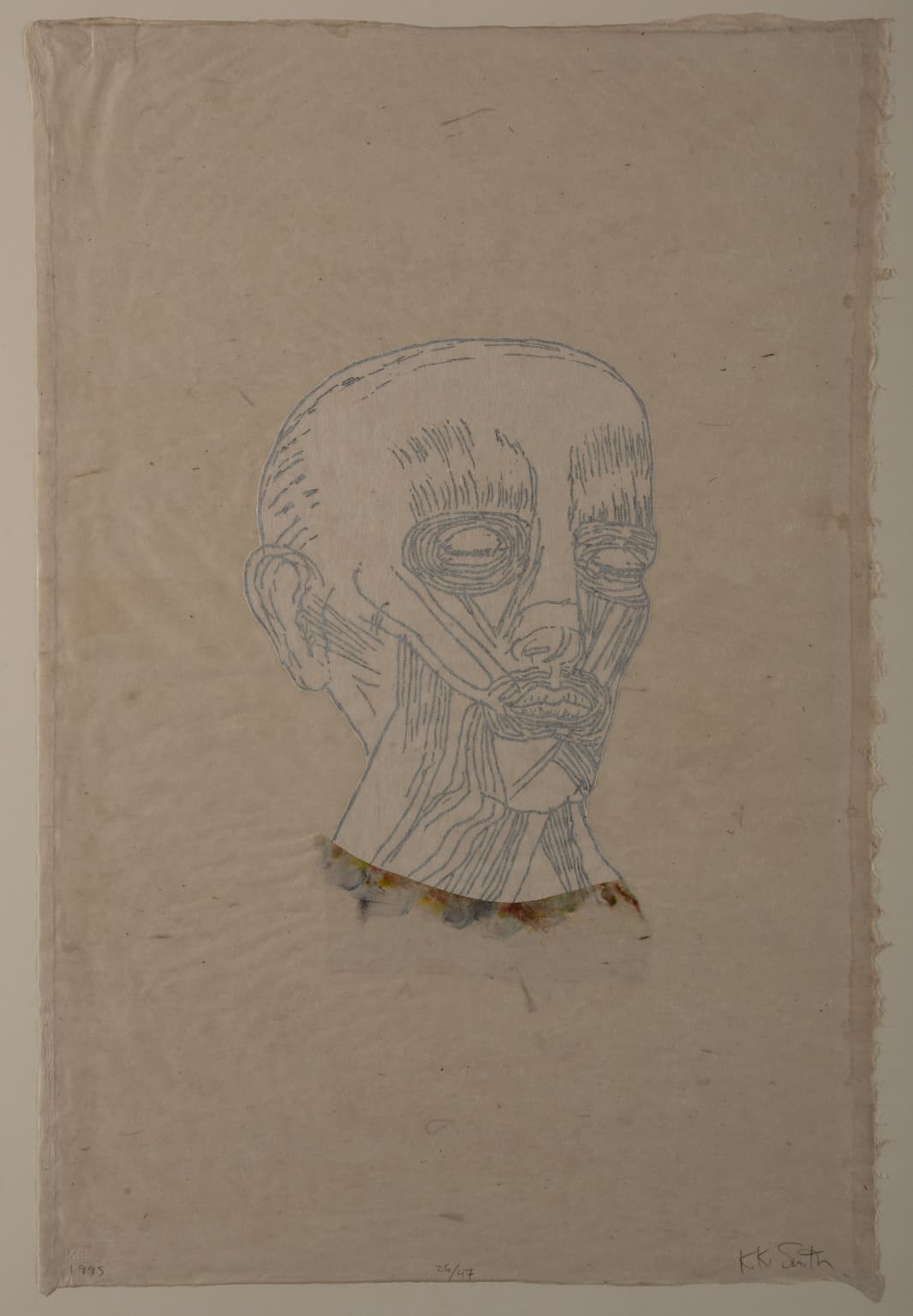
Untitled (Head)
- Kiki Smith (American, Born 1954)
Kiki Smith was born in West Germany in 1954, but moved to the United States with her family as an infant. Smith has worked in a variety of media, including sculpture, printmaking, film, and textile. She is consistent with her themes, however – birth and regeneration, sex, and the human condition. Smith’s early upbringing in the Catholic Church and her interest in the human body has shaped much of her work. There were several traumatic events in Smith’s life – including the death of her father in 1980 and the loss of her sister to AIDS in 1988 – that led Smith to truly explore mortality and the limits of the human body. She did not shy away from subjects that were considered taboo – such as bodily fluids and functions.
In the 1980s, spurred on by the deaths in her family and general state of the world, Smith embarked on an exploration of printmaking processes. She worked with a New York City artists’ group called Colab to create a number of posters containing political statements. By 1989, Smith’s work had been featured in the Brooklyn Print Biennial, where it was seen by Bill Goldston – the director of New York print studio ULAE. Goldston was impressed by Smith’s work and invited her to print at his studio, and since then Smith has made 40 editions with ULAE working in a variety of print processes.
Untitled (Head) is an example of Smith’s work with ULAE (the ULAE stamp can be seen in the bottom left corner). The piece was created in 1995 as a limited edition of 47 to support the New York Foundation for Contemporary Art’s (FCA) artist granting program. The print was available exclusively from FCA and was purchased through the Brenau University Art Endowment.
Kiki Smith came of age as an artist in the late 1970s, when the second wave of Feminism was coming to an end and artists were seeking to explore women’s place in the world socially, culturally, and politically. Smith’s unabashed attention to the human condition and her determination to call attention to the body – the strong and beautiful parts as well as the hidden and confusing parts – have positioned her as an important figure in 20th and 21st art history. Smith has said, “I always think the whole history of the world is in your body”, and that is what she represents through her work.
